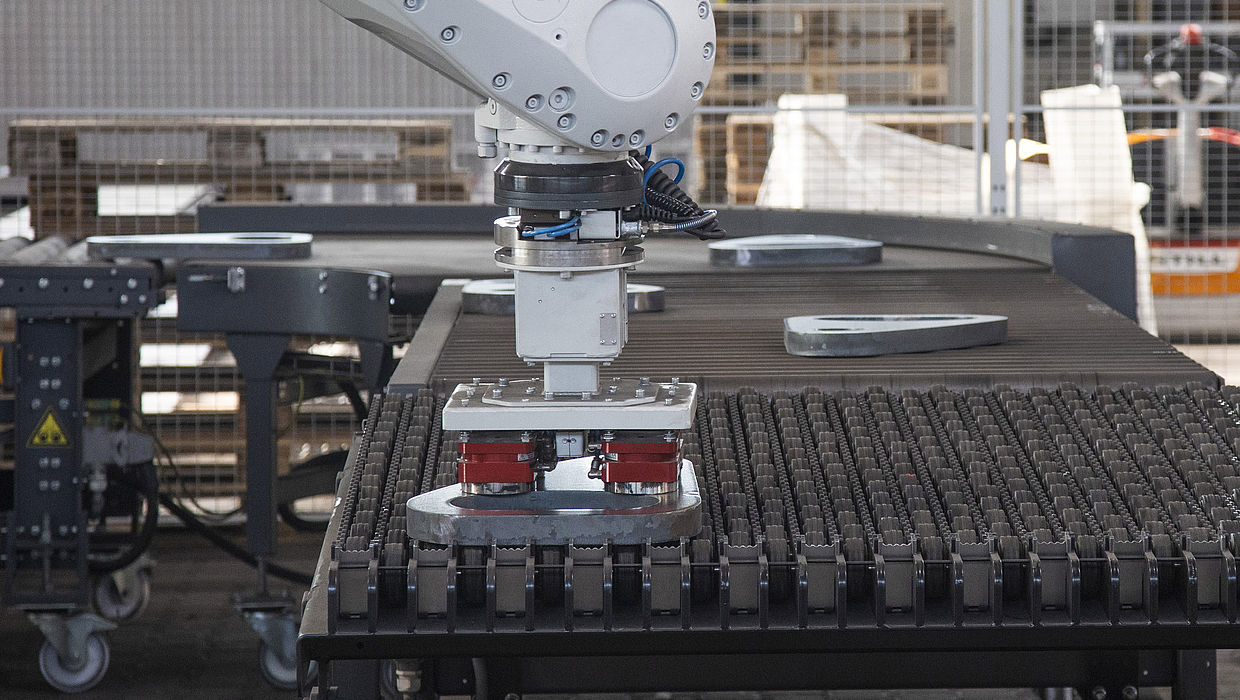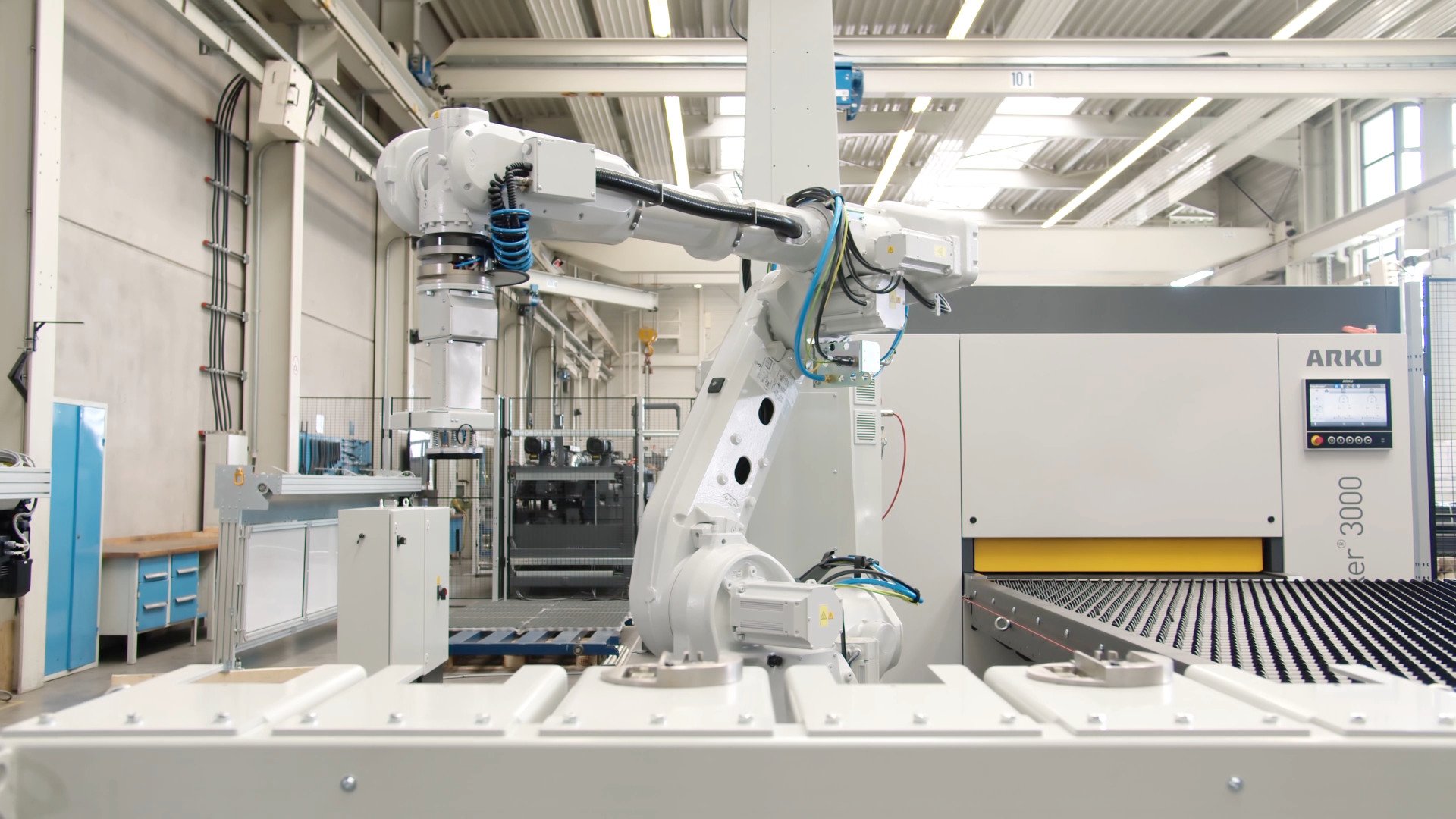When the machines become increasingly faster, the additional processes come into focus: The material must be available at the line in good time and in the right quantity, fed in and removed again. But hiring more staff for this is out of the question. Because this is often not only too expensive, but also impossible to find on the labor market.
Many repetitions are well suited for robots
Especially tasks such as loading and unloading leveling or deburring machines are often monotonous and characterized by many repetitions. On the one hand, this makes them unattractive for qualified skilled workers, on the other hand, it makes them very suitable for robots. The higher the number of repetitions, the more likely it is that automation with robots will pay off. And when it comes to heavy parts, the machine copes better than the human: A robot does not need breaks. And it never stays at home with a sore back.
In one way, however, humans are still far superior to robots: They can identify how a task is to be completed and find solutions themselves. The robot, on the other hand, has to be shown every single step. But this has become easier and easier in recent years. Tedious programming in a separate programming language has often been replaced by teaching.

Intelligent vision robots can handle part variety
The robots become even more flexible when they are equipped with an additional camera. Such a vision robot can then recognize for itself how the workpieces are positioned in front of the machine. With the help of artificial intelligence, it then independently selects the correct gripping points and inserts the workpieces into the machine in the correct position. The same applies during removal: The robot grips the parts and places them back in the correct position.
Artificial intelligence is enabling steady progress in the variety of parts that can be handled automatically. Robots are detecting increasingly complicated part geometries and can handle them. Robots are thus also becoming interesting for small and medium-sized companies that often process changing workpieces in small batch sizes.

Further automation tools for leveling and deburring
In addition to the vision robots for part handling, there are other tools to further automate leveling and deburring. For example, the FlatJack® from ARKU can automatically measure the flatness of sheets. This makes it possible to determine whether a sheet is correctly leveled or whether it needs to go through the leveler again. For deburring machines, the Wizard software automatically calculates the correct settings for the respective processing task.
Robot-supported handling without programming.
ARKU parts handling is the automated loading and unloading solution for your machines. It is extremely simple thanks to automatic parts recognition.



